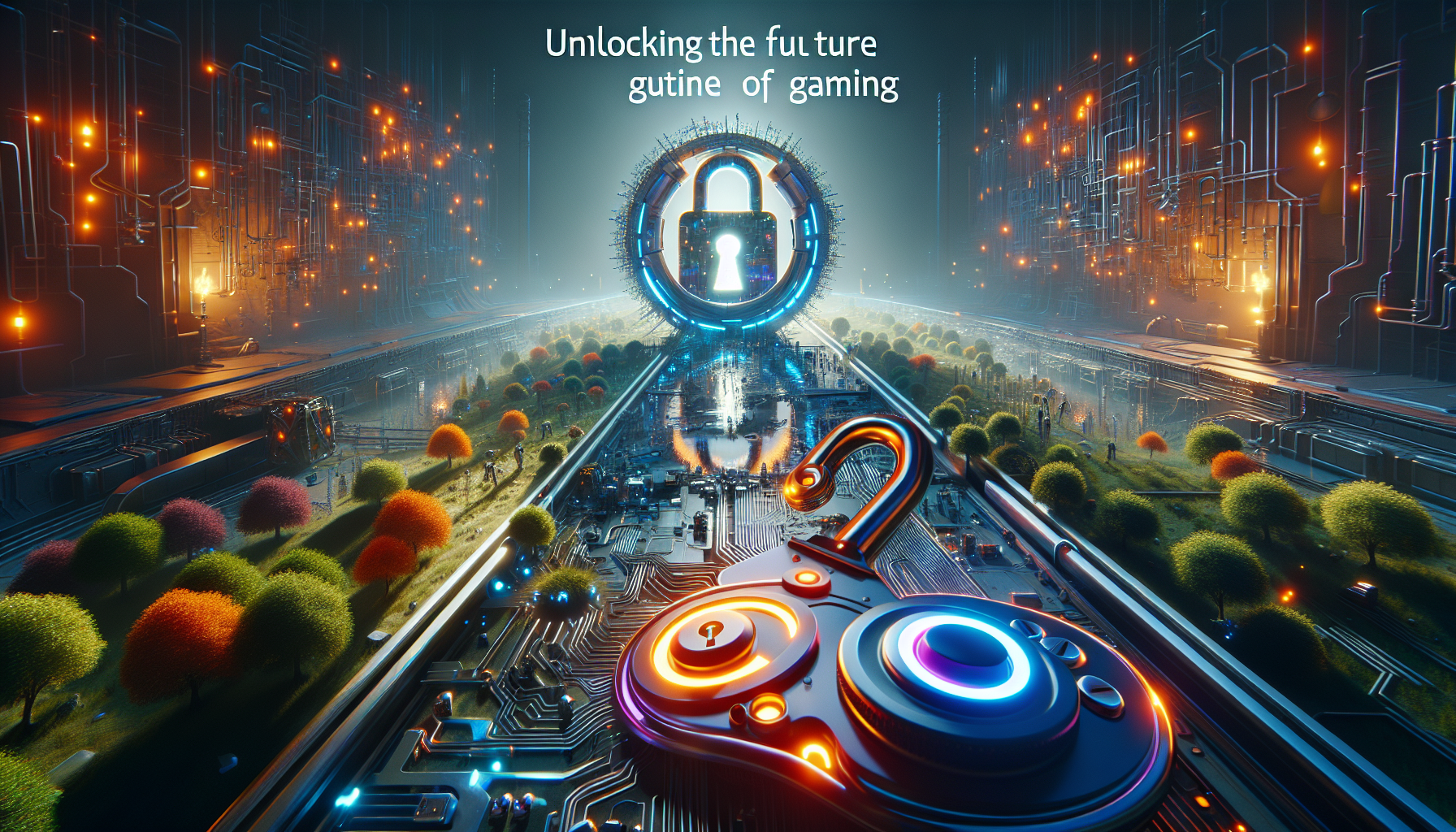Gaming
Unlocking the Future of Gaming: A Comprehensive Guide to Ray Tracing Technology

Have you ever marveled at the stunning visuals in modern video games? The lifelike graphics, the way light plays off surfaces, and the shadows that stretch just right? Well, my friend, that’s the magic of ray tracing technology, and it’s transforming gaming as we know it. Dive into this guide to discover what ray tracing is, why it matters, and how it’s set to shape the future of gaming.
What is Ray Tracing?
Ray tracing is a rendering technique that simulates the way light interacts with objects in a virtual scene. Unlike traditional rendering methods, which approximate lighting and shadows, ray tracing calculates the path of individual rays of light as they bounce around. This results in more realistic lighting, shadows, reflections, and textures.
Why Should You Care?
- Realism: Games look nearly indistinguishable from reality.
- Immersion: Enhanced visuals draw you deeper into gameplay.
- Innovation: Developers push boundaries to create stunning experiences.
Simply put, ray tracing elevates gaming from “just a game” to an art form.
The Evolution of Gaming Graphics
From Pixel Art to Hyper-Realism
When gaming began, graphics were as basic as they come—think 8-bit characters and pixelated environments. Fast forward to today, and we’re greeted with hyper-realistic graphics thanks to advancements in technology.
- 1980s-1990s: Enter 3D graphics with rudimentary engines.
- 2000s: Introduction of shaders and textures.
- 2010s: Rise of 4K and beyond, but ray tracing was still a dream.
But all that changed with the introduction of ray tracing in gaming engines. Nvidia and AMD have spearheaded this tech, leading to the stunning visuals we see in games today.
How Ray Tracing Works
Understanding ray tracing can feel a bit like unraveling a puzzle, but it’s not as complex as it seems. Here’s a simplified breakdown:
- Ray Generation: Rays are cast from the camera into the scene. Each ray determines what the player will see.
- Intersection: The engine calculates where each ray intersects with objects in the scene.
- Shading: Once an intersection is found, the engine determines lighting and color based on various factors, like light sources and surface materials.
Types of Ray Tracing Effects
- Global Illumination: Simulates direct and indirect light for a realistic environment.
- Reflections: Objects reflect light accurately, making it possible to see reflections of other objects in surfaces.
- Shadows: Shadows are rendered more naturally, filled with subtle gradients rather than harsh lines.
These effects combine to create a more immersive environment.
The Hardware Behind Ray Tracing
To experience ray tracing, you need the right hardware. The latest graphics cards, like the Nvidia GeForce RTX series or AMD’s Radeon RX 6000 series, support this technology.
Minimum Requirements
- Graphics Card: Nvidia RTX 2060 or AMD Radeon RX 6000 series or higher.
- Processor: A powerful CPU—think Intel i5 or AMD Ryzen 5 and above.
- RAM: At least 16GB.
- Storage: SSDs are preferable for faster loading times.
This technology isn’t just for hardcore gamers; even casual players can enjoy enhanced graphics with the right setup!
Impact on Game Development
Ray tracing has shaken up how developers approach game design. Here’s how it’s influencing development:
A New Playground for Creators
- Visual Realism: Developers can craft environments that feel authentic.
- Enhanced Gameplay: Realistic visuals can impact gameplay mechanics, like stealth dynamics based on shadows.
- Artistic Expression: Artists push the limits of creativity, paving the way for unique experiences.
Many game developers now prioritize ray tracing in their engines to offer players that next-level experience.
Popular Games Utilizing Ray Tracing
Here’s a quick list of some games that harness the power of ray tracing, ensuring you get the most stunning visuals:
- Cyberpunk 2077
- Control
- Minecraft
- Watch Dogs: Legion
- Call of Duty: Modern Warfare
These titles showcase the full potential of ray tracing, from vibrant cityscapes to dramatic nighttime settings.
The Future of Ray Tracing and Gaming
So, what’s next for ray tracing? As technology continues to improve, we can expect:
Broader Adoption
As ray tracing becomes more ubiquitous, mid-range and budget-friendly hardware will likely support it, making high-quality visuals accessible to a larger audience.
Enhanced Performance
Future updates in gaming engines will optimize ray tracing, making it more efficient. This means less strain on hardware without sacrificing quality.
More Immersive Experiences
Developers are always looking for innovative ways to incorporate advanced graphics into gameplay. Expect interactive environments that respond dynamically to player actions, all thanks to ray tracing.
Conclusion: Ready to Level Up?
Ray tracing technology is more than just a fancy gimmick; it’s a groundbreaking advancement that is reshaping the gaming landscape. As games become visually stunning and more immersive, it’s clear that this technology will play a vital role in the future of gaming.
If you want to keep up with the latest in gaming technology, be sure to check out our related articles on newsdaybreak.com for more insights!
Additional Resources
For further reading on ray tracing and its implications in gaming, check out this comprehensive guide from Nvidia or explore statistics about gaming technology from Pew Research.
Now, go forth and game on with your newfound knowledge of ray tracing! Your gaming experience will never be the same again!
-

 News21 hours ago
News21 hours agoTeenage US Citizen Records Brutal Arrest by Immigration Agents Who Told Him, ‘You Have No Rights’
-
News20 hours ago
Maltese Police Officers Participate in Operation in the Black Sea
-

 Business21 hours ago
Business21 hours agoNavigating the Economic Landscape: Key Insights from Today’s Business Headlines
-

 News19 hours ago
News19 hours ago“Honoring Ukraine: A Tribute” (July 26, 2025) — dynamo.kiev.ua
-

 Business18 hours ago
Business18 hours agoThe Top 10 Business Opportunities to Watch in 2025
-

 Business20 hours ago
Business20 hours agoNavigating the Shifting Sands: Key Global Economic Trends for 2024
-

 Entertainment21 hours ago
Entertainment21 hours agoCinematic Success: Fun Facts About Movies That Shaped the Film Industry
-

 News18 hours ago
News18 hours agoEnviMin Showcases Vacaresti Natural Park to Her German Counterpart
